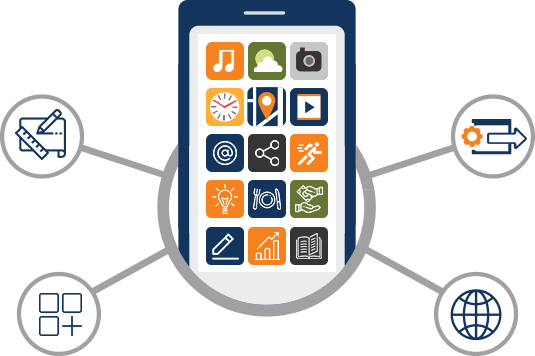Smartphones have become a fundamental need for everyone in this world. But what about the people who have visual or hearing disabilities, etc.? These people make up approximately 15% of our population and are often unable to operate smartphones with as much ease as the average population. That is where accessibility testing comes into the picture. It evaluates mobile or web applications to ensure that they are easily accessible by all Internet users, regardless of their physical disabilities.
Accessibility Testing and its Importance
Accessibility testing is a part of usability testing, which is performed to test the accessibility feature on mobile and web applications. It checks and confirms whether it is accessible to everyone, including people with physical disabilities. It can be performed either manually or via automation.
Click here for – Mobile App Development Company in Delhi
Organizations these days ensure they develop applications with high-quality accessibility features. They do this by embedding certain assistive technologies in the systems or mobile devices. Some software like Speech Recognition, Screen Magnifier, etc., are integrated to enhance the accessibility in the devices. This is done to provide disabled people with a seamless experience of operating web or mobile applications. There are four principles of accessibility testing, namely:
- Perceivability
- Operability
- Understandability
- Robustness
Why is Accessibility Testing a Must for Mobile Applications?
Accessibility testing is now a mandatory part of developing applications. With the ever-increasing influence of digital media, digital applications have become essential to healthcare, education, banking, insurance, entertainment, etc. Thus, businesses must make the applications accessible to even people with diverse abilities to appropriately cater to people across communities. Online businesses and product companies are leveraging accessibility testing for the following reasons:
- Improve accessibility to users with physical challenges.
- Boost accessibility for users operating within low-bandwidth internet.
- Increase their customer base and market share.
- Provide reliable content to the customers and generate market opportunities.
How to Conduct Accessibility Testing on Android Devices?
Organizations perform accessibility testing using automation tools, some of which are free and readily available in the market. There are three fundamental ways to perform accessibility testing on Android devices, namely:
Accessibility Scanner: Accessibility Scanner is an application launched by Google. It is simple to operate for identifying issues with the application and is readily available on the Android play store for free. Once installed, launch the accessibility scanner with the below steps:
Settings → installed services → accessibility scanner → allow permissions as ‘on’.
Manual Testing: Manual testing is conducted using the self-mobile applications with the help of the following steps:
Settings → Accessibility → TalkBack → Tab it on
The user can interact with the Android device without worrying about looking at the screen and observing any potential errors.
Automated Testing Tools: Web Accessibility Checker (AChecker) and Web Accessibility Evaluation Tool (WAVE) are two automated testing tools for accessibility testing used on Android devices. However, two Web Accessibility Testing Services are available as well, namely, the WCAG Accessibility Checklist for Android and Accessibility Insights for Android.
The automated testing tools decrease the testing time to a great extent with accurate results. There are separate tools for testing in Android and iOS versions. An essential key to conducting accessibility testing is to consider testing mobile and web applications across multiple devices. Although some accessibility tests can be automated, manual testing is better suited for many accessibility tests. It enables the tester to explore an application with the help of actual devices and also assists with obtaining a better perspective on its level of accessibility. Many tools have overlapping features; therefore, accessibility tests do not require using every tool to attain proper test coverage.
Conclusion
Smartphones and personal devices have become a boon to the technology industry. This is how the demand for accessibility testing will continue to grow and remain strong over the coming years. In a nutshell, increased user base, enhanced code quality, and SEO have proved to be the benefits of accessibility testing.
Moreover, it is crucial to understand that accessibility testing is beneficial for disabled people and helps the elderly, children, and left-handed people use their devices with as much ease and convenience as the average population. Customer experience has become critical to businesses, and enhancements have been going on for the same. Better accessibility is directly proportional to better user experience.
ImpactQA simplifies the use of automated accessibility testing. It provides advanced assistance for conducting accessibility testing services for various industrial applications. Get a free consultation with ImpactQA’s expert testers today!

